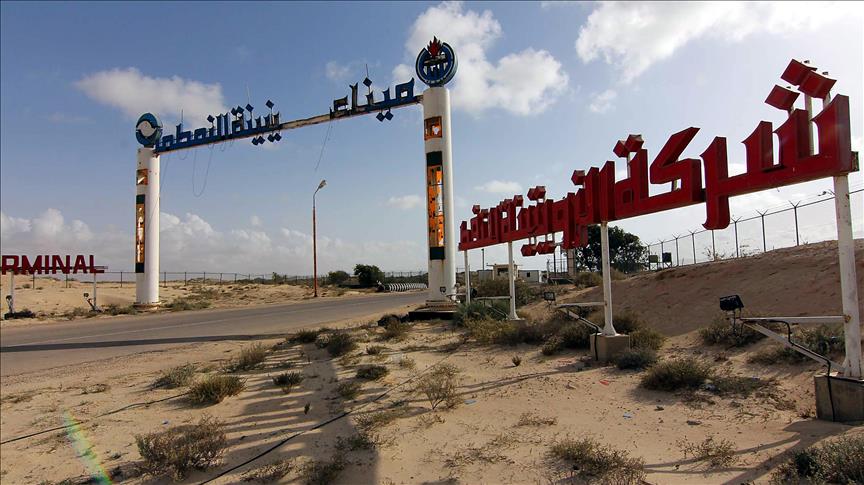The ongoing fight for Libya's strategic 'oil crescent'
Libya’s warring camps remain locked in conflict over North African country’s oil-rich central region
 file photo
file photo
By Jihad Nasr
TRIPOLI, Libya
Forces loyal to Libya’s Tobruk-based parliament, led by military leader Khalifa Haftar, hope to capture a strategic airbase as a necessary step to retaking Libya’s coveted “oil crescent” region, according to sources close to the conflict.
Ali Said, an officer in the pro-Haftar camp, spoke to Anadolu Agency about Haftar’s ongoing campaign and recent military deployments to the strategic region.
“Our recent deployments are aimed not only at recapturing strategic oil ports, but also at seizing the
The Benghazi Defense Brigades (BDB) came into being last summer with the aim of supporting the Benghazi Shura Council against pro-Haftar forces.
The Benghazi Shura Council is comprised largely of armed revolutionaries who fought the Gaddafi regime during Libya’s bloody 2011 uprising.
Last September, Haftar’s forces briefly managed to establish control over most of the oil crescent. Earlier this month, however, they lost two of the region’s most lucrative oil ports -- Al-Sidra and Ras Lanuf -- to BDB militiamen.
The Al-Sidra and Ras Lanuf energy terminals are two of the country’s largest, with a combined production capacity of some 600,000 barrels of oil per day.
"Army [i.e., pro-Haftar] forces are now engaged in an air, ground and sea offensive aimed at retaking Ras Lanuf," read a statement issued on March 14 by Haftar’s self-styled Libyan National Army.
Libya’s oil crescent region stretches from Ras Lanuf in the country’s east to the north-central city of Sirte and down to the southern
The region accounts for an estimated 80 percent of Libya’s total oil production and has remained a point of contention among rival factions battling for control of the country.
For the most part, the region contains only small towns and industrial cities for oil workers and their families. It is thought to be inhabited by less than 1 percent of Libya’s total population.
Taking
According to sources close to Haftar, the capture of the strategically located
Haftar hopes to eventually establish control over all of southern Libya, these sources say -- but to do so, he first must decisively capture
“Haftar’s forces have already captured the oil-rich town of Zella and the Brak al-Shatti Airbase,” said one pro-Haftar source, speaking anonymously due to restrictions on talking to media.
“But this control won’t be complete without seizing
He added: “If Haftar were to take the
When late Libyan leader Muammar Gaddafi originally built the
The airbase is said to contain solid infrastructure despite having been the target of both French and NATO bombing campaigns during and after the 2011 uprising against Gaddafi.
“But Haftar knows he can’t capture or hold
Post-uprising turmoil
Libya has been wracked by turmoil since
In the wake of the uprising, the country’s stark political divisions yielded two rival seats of government -- one in Tobruk and the other in Tripoli -- along with a host of competing militia groups.
In 2014, Haftar, a former general under Gaddafi, announced the dissolution of Libya’s Tripoli-based General National Congress (GNC), which had unilaterally extended in governing mandate.
The move led to open conflict between forces loyal to the GNC and a Tobruk-based parliament supported by Haftar’s forces, which now reportedly enjoy the support of both neighboring Egypt and the United Arab Emirates.
In an effort to resolve the country’s crippling political deadlock, Libya’s warring camps signed a UN-backed agreement in late 2015 establishing a government of national unity.
The UN-backed unity government, however, which Haftar continues to openly challenge, has yet to apply its governing writ across the battle-scarred North African country.
*Ramez
Reporting by Jihad Nasr; Writing by Mahmoud Barakat, Ali H. M.Abo



